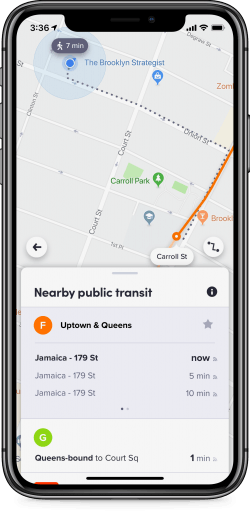More mobility options now available through Lyft’s app
Lyft will be implementing a series of changes to its app that are designed to make it easier for users to select the right ride for their mobility situation.
“Starting today, when you open your Lyft app, you’ll see all your ride options front and center on your home screen: scooters, bikes, public transit, car rentals, Shared rides, regular rides, big rides and even more. It’s the first in a series of changes that make it easier for you to choose the right ride for every occasion (and every mood),” the company wrote in a blog post on Sept. 24.
Users of Lyft’s app will be able to compare time and cost across different ride types, giving the user all the needed information required to select a faster or more affordable trip. Originally, when the app opened users saw nearby vehicles displayed on a map. With the changes, users will now see bikes, scooters and nearby public transit vehicles. Other enhancements, such as bike lanes marked in green, are available in the iOS version of the app, with the Android version to follow.
“We believe cities should be built around people, not cars. That’s why we redesigned the Lyft app last year to make it easier to compare ride options and why we continue to invest in Shared ride options and self-driving technology, and why we are working hard to add bikes, scooters and public transit options in more cities,” wrote Lyft.
A challenge the company has faced with the integration of public transit information is a “shift to understanding someone else’s operations and service.” Lyft relies on General Transit Feed Specification (GTFS) and GTFS Real-Time formats to bring much of the transit information into its own app. However, in the case of New York City’s complex network, Lyft has worked with Moovit for transit data.
“With our mission of simplifying urban mobility, we were honored to be chosen as the public transit data provider for Lyft and worked quickly to get the feature up and running for New Yorkers,” Moovit wrote in a blog post.
The collaboration will allow riders to see information regarding buses, trains, subways and even the ferry to commute and connect to their destination.
About the Author

Mischa Wanek-Libman
Group Editorial Director
Mischa Wanek-Libman is director of communications with Transdev North America. She has more than 20 years of experience working in the transportation industry covering construction projects, engineering challenges, transit and rail operations and best practices.
Wanek-Libman has held top editorial positions at freight rail and public transportation business-to-business publications including as editor-in-chief and editorial director of Mass Transit from 2018-2024. She has been recognized for editorial excellence through her individual work, as well as for collaborative content.
She is an active member of the American Public Transportation Association's Marketing and Communications Committee and served 14 years as a Board Observer on the National Railroad Construction and Maintenance Association (NRC) Board of Directors.
She is a graduate of Drake University in Des Moines, Iowa, where she earned a Bachelor of Arts degree in Journalism and Mass Communication.
